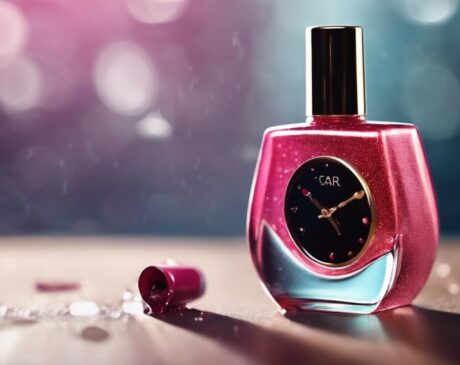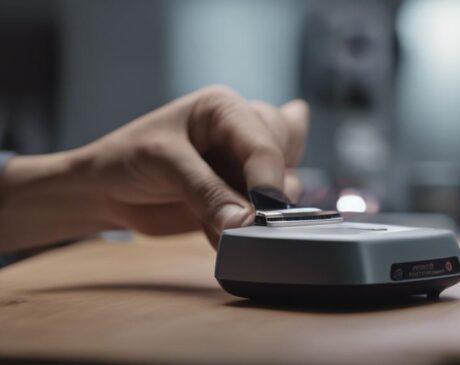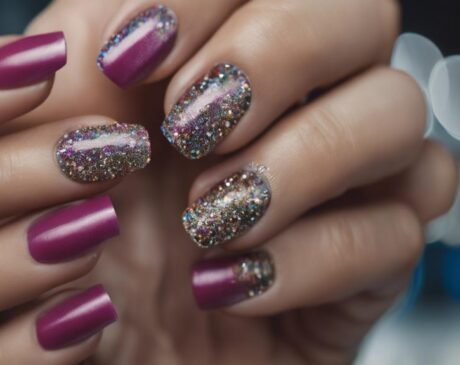What Is the Difference Between a Nail Lamp and a UV Lamp?
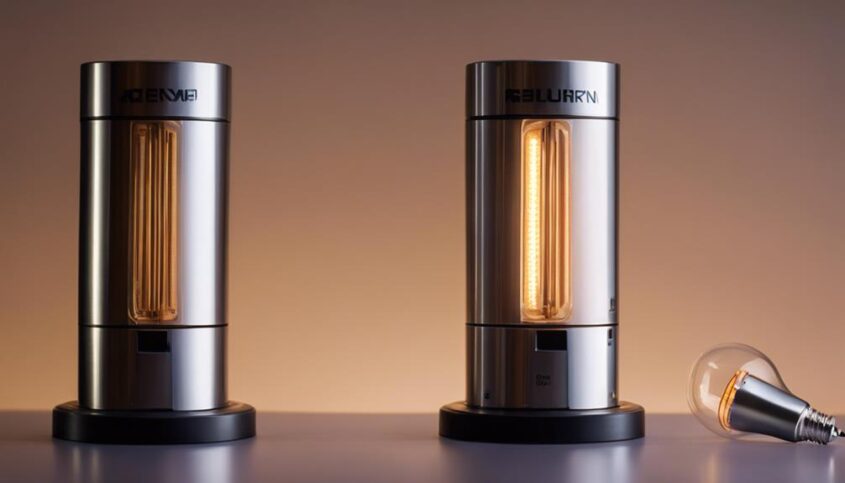
Nail lamps are tailored for curing gel nail polish efficiently, while UV lamps have broader applications like sterilization and scientific use. Nail lamps emit specific light wavelengths, targeting gel polish curing, whereas UV lamps emit UV light for various purposes. The curing time also differs, with LED nail lamps being quicker than UV lamps. Additionally, nail lamps have safety features like timers and eye protection. Understanding these differences helps with gel type compatibility. If you want to master the variations between nail lamps and UV lamps, explore the nuances further.
Key Takeaways
- Nail lamps target specific photoinitiators in gel polish with LED technology.
- UV lamps emit a broader spectrum of UV light for various applications.
- LED nail lamps cure gel polish layers faster than UV lamps.
- Safety features like timers and overheat protection differ between the two types.
- Compatibility varies: LED lamps for LED gel polishes, UV lamps for UV gel polishes.
Purpose and Function
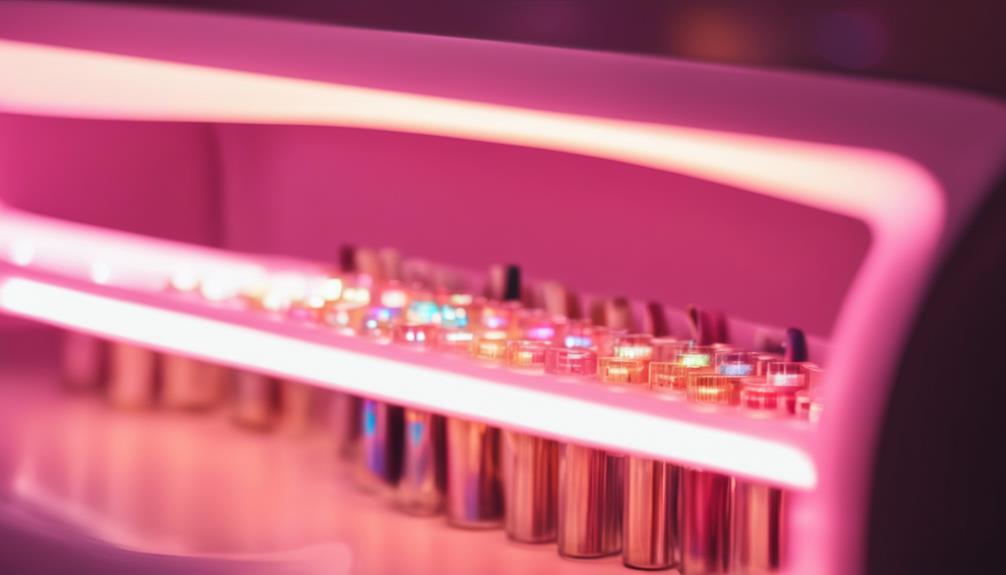
The purpose and function of a nail lamp and a UV lamp differ primarily in their application within the realm of nail care and enhancement. Nail lamps are specifically designed for curing and drying gel nail polish efficiently and effectively. These lamps emit a specific wavelength of light that is ideal for curing the photoinitiators present in gel polish, resulting in a durable and long-lasting manicure. On the other hand, UV lamps, while also emitting UV light, have a broader range of applications beyond nail care. UV lamps are commonly used for sterilization, counterfeit detection, and even scientific experiments.
Nail lamps are engineered to provide the precise amount of light needed to cure gel polish evenly without causing any harm to the skin or nails. They are equipped with timers and sensors to ensure the correct curing time and temperature, leading to impeccable results. UV lamps, on the contrary, may not have these specific features tailored for nail enhancement procedures, making them less suitable for this particular task.
Light Spectrum Variations
In the realm of nail care technology, the light spectrum variations between nail lamps and UV lamps play a crucial role in their distinct functionalities. Nail lamps primarily use LED technology, emitting a narrow spectrum of visible light that targets specific photoinitiators in gel polishes, ensuring efficient curing without causing harm to the skin. On the other hand, UV lamps emit a broader spectrum of ultraviolet light, which activates a wider range of photoinitiators, leading to the curing of traditional UV gel polishes. The light spectrum variances between these lamps are essential as they determine the compatibility with different types of gel products. Additionally, the targeted spectrum of light emitted by nail lamps reduces the risk of skin damage associated with prolonged exposure to UV light, making them a safer and more advanced choice for nail curing processes. Understanding these light spectrum differences is fundamental for nail technicians seeking innovative and efficient solutions in the ever-evolving nail care industry.
Drying Time Variances
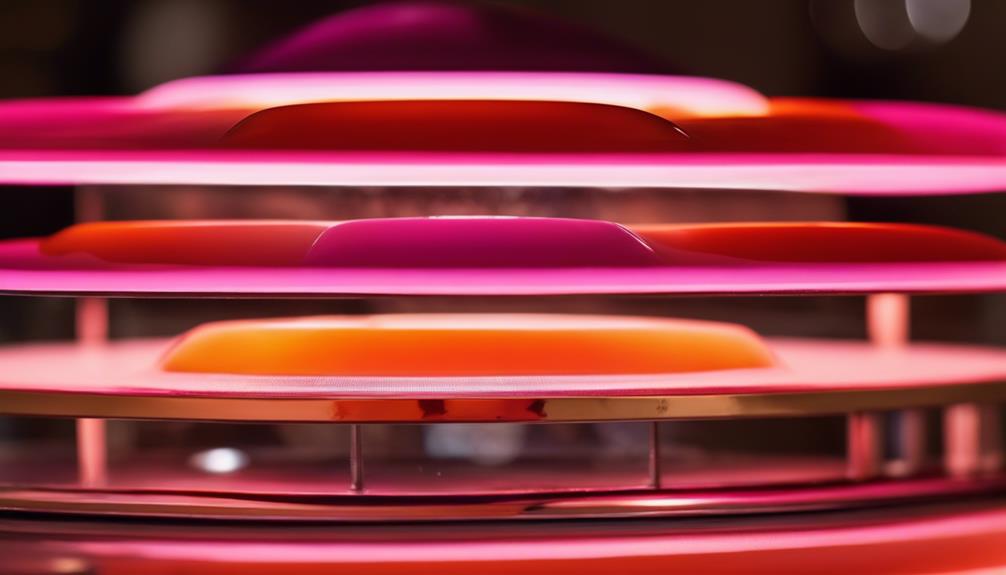
With distinct light spectrum variations established, another critical aspect to consider when comparing nail lamps and UV lamps is the drying time variances they offer. Nail lamps, particularly LED ones, are known for their quick curing times. LED nail lamps can cure gel polish layers in as little as 30 to 60 seconds, making them a popular choice among those seeking efficiency and speed. On the other hand, UV lamps generally require longer curing times compared to LED lamps. UV lamps can take anywhere from 2 to 3 minutes to cure each layer of gel polish. However, some users appreciate the slightly longer curing times of UV lamps as they believe it allows for better adhesion and durability of the gel polish. Ultimately, the choice between a nail lamp and a UV lamp may depend on individual preferences for drying time, with LED lamps being favored for their rapid curing abilities and UV lamps for those who prioritize thorough and meticulous curing processes.
Safety Features and Concerns
Ensuring the well-being of users, nail lamps and UV lamps are equipped with a range of safety features to mitigate potential risks and address common concerns within the nail curing process. These safety features aim to provide a secure environment for users while maximizing the efficiency of the curing process. Some common safety features found in nail lamps and UV lamps include:
| Safety Features | Description |
|---|---|
| Overheat Protection | Automatically shuts off the lamp to prevent overheating. |
| Timer Settings | Allows users to control the curing time and prevent overexposure. |
| Eye Protection | Shields to block UV light from harming the eyes during the curing process. |
| Heat Dissipation | Efficient cooling systems to prevent the lamp from getting too hot. |
| Short Circuit Protection | Safeguards against electrical malfunctions that could pose a risk. |
Compatibility With Gel Types
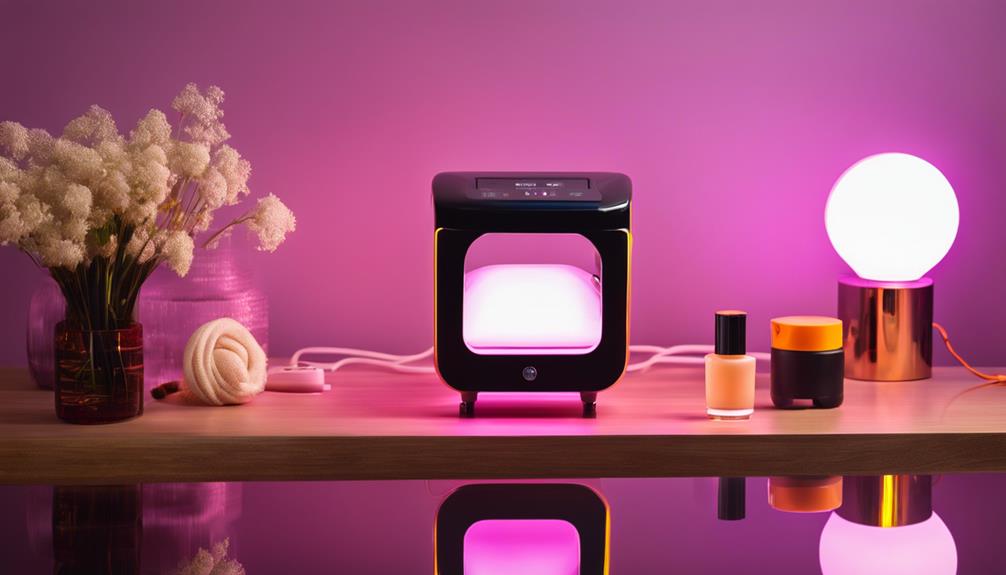
Equipped with varying compatibility specifications, both nail lamps and UV lamps are designed to cater to a wide range of gel types used in the nail curing process. When considering the compatibility of these lamps with different gel types, several factors come into play:
- LED Gel Polishes: Nail lamps are often compatible with LED gel polishes, offering quick curing times for efficient salon services.
- UV Gel Polishes: UV lamps are typically suitable for curing UV gel polishes, providing a reliable curing method for this specific gel type.
- Builder Gels: Both nail lamps and UV lamps can be compatible with builder gels, ensuring proper curing for strong and durable nail enhancements.
- Shellac: Certain nail lamps are specially designed to be compatible with Shellac polishes, offering a tailored solution for this popular gel type.
Frequently Asked Questions
Are Nail Lamps and UV Lamps Interchangeable for Curing Gel Polish?
Nail lamps and UV lamps serve as curing tools for gel polish, crucial for setting and hardening the polish effectively. Understanding their unique features and compatibility can optimize the manicure process, ensuring a professional finish.
Can Nail Lamps Be Used for Other Types of Nail Treatments Besides Gel Polish?
Nail lamps have evolved to cater to various nail treatments beyond gel polish curing. These versatile devices can now accommodate services like nail strengthening, nail art embellishments, and even nail extensions, offering a comprehensive solution for all nail enthusiasts.
How Do Nail Lamps Compare to Air Dry Nail Polish in Terms of Longevity?
Nail lamps, with their advanced curing technology, offer extended longevity for air-dry nail polish compared to traditional methods. Through innovative processes, these lamps ensure lasting results, enhancing the durability and vibrancy of nail treatments.
Are There Any Potential Health Risks Associated With Using Nail Lamps?
Using nail lamps may pose potential health risks due to exposure to UV light. Risks include skin aging, skin cancer, and eye damage. It is advised to use protective measures like sunscreen and UV-blocking glasses.
Can Nail Lamps Be Used on Natural Nails or Are They Only for Artificial Nail Enhancements?
Nail lamps can be used on natural nails for various purposes, such as drying regular nail polish or strengthening natural nails with gel polish. They offer a convenient and efficient way to achieve long-lasting results in nail care routines.

